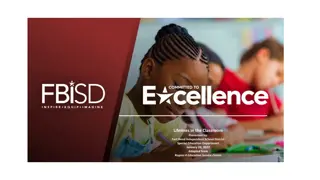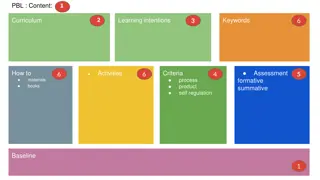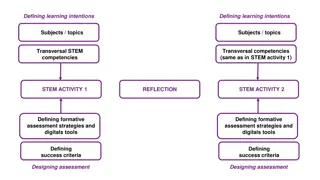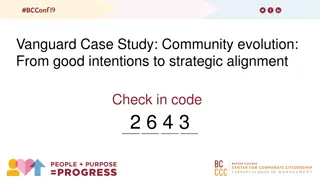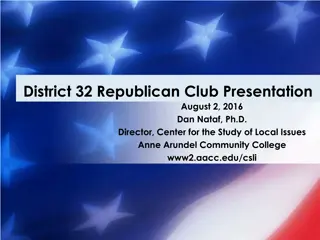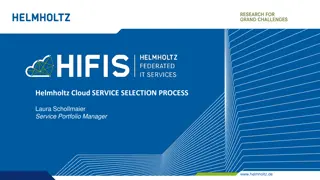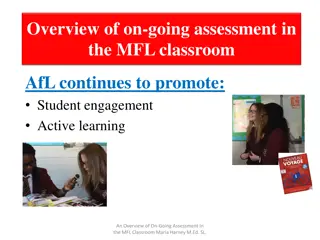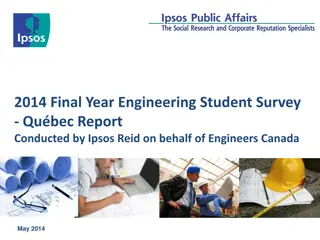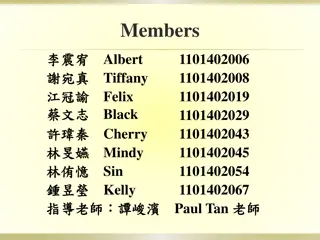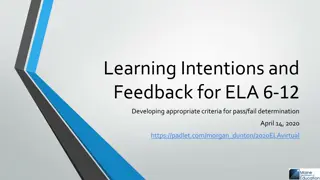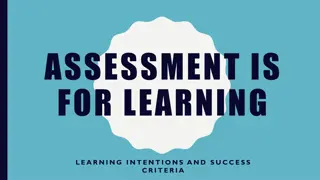Understanding Learning Intentions and Success Criteria
Learning intentions and success criteria play a crucial role in enhancing student focus, motivation, and responsibility for their learning. Research indicates that students benefit greatly from having clear learning objectives and criteria for success. Effective learning intentions should identify what students will learn, explain the reason for learning, and be stated in understandable language. Devising learning intentions involves stating them clearly using measurable verbs. By separating learning intentions from success criteria, educators can better guide students toward achieving desired outcomes.
Download Presentation

Please find below an Image/Link to download the presentation.
The content on the website is provided AS IS for your information and personal use only. It may not be sold, licensed, or shared on other websites without obtaining consent from the author. Download presentation by click this link. If you encounter any issues during the download, it is possible that the publisher has removed the file from their server.
E N D
Presentation Transcript
Learning Intentions & Success Criteria
To gain an understanding of Learning Intentions and Success Criteria
To utilise this new information on Learning Intentions and Success Criteria To feel confident in implementing this practice in your 2nd year classes
The value of learning intentions and success criteria Research shows that students who regularly receive this information in the classroom are More focused for longer periods of time More motivated and active in their learning Better able to take responsibility for their own learning.
Learning intentions What and Why Success criteria How to recognise success
Learning Outcomes Learning Intentions Success Criteria
Learning Intentions Learning Intentions are an explicit description of what a learner should know, understand and be able to do as a result of learning. (Learning and Teaching Institute, Sheffield Hallam University)
Learning intentions are effective when they... 1.Identify what students will be learning (We are learning to ) 2.Explain the reason for the learning (This is because ) 3.Share and where appropriate, negotiate the learning and the reason with students at the beginning of the lesson or activity 4.Are presented in language that students can understand 5.Are revisited throughout the activity/lesson
Devising Learning Intentions State learning intentions simply and clearly. Learning Intentions should be capable of being validly assessed a verb should be used in the statement. Plan a nutritional menu for two Measure and Map an area Describe the environmental effects of a natural disaster
Separating the Learning Intention from the Context of Learning The context of learning is simply the actions, activities and/or tasks students will be doing to achieve the Learning Intention. Learning Intention Context of Learning Write clear instructions How to bake a cake Present an argument for or against a controversial proposition Four corner discussion on the statement, student benefit should be reduced Identify metaphors Lake Isle of Innisfree Identify the parts of the respiratory system and explain their function Smoking
Clarified Learning Intentions Clear: focus on what will be learned in the lesson, as distinct from what students will do in the lesson Useful: focus is on concepts, skills or knowledge that is used rather than focusing on imparting knowledge Can be transferrable to a similar context Adapted from source: Leahy, S, Lyon, C and Wiliam, D. (Nov.2005) Classroom Assessment: Minute by Minute, Day by Day. Educational Leadership
Success Criteria Success Criteria suggest ways to achieve a learning intention. How will I know when I have learned? How will I know when I have achieved the learning intention? The learning intention and the success criteria need to be visually displayed WILF - What I m Looking For
What are success criteria? Success criteria are linked to learning intentions. They are developed by the teacher and/or the student and describe what success looks like. They help the teacher and student to make judgements about the quality of student learning.
SuccessCriteria... Must link clearly to the learning intentions Need to be planned in advance Need to be owned by the student Need to be broad enough to include all abilities in a class Lead to more focussed and successful teaching and learning
Why are success criteria important? Improve understanding Empower students Encourage independent learning Enable effective feedback
Stems for Writing Success Criteria What I expect from everyone is What I am looking for is Why does ..? What if .? How would you .? Could you explain .? What might .? To produce a good what do you need to do? What do we already know that would help ? To be successful you www.pdst.ie
Sharing the learning intention and success criteria Topic Learning intentions Success criteria Assessment for Learning in the MFL Classroom M. Harney. M.Ed SL
Revisiting the learning intention Thumbs up / happy faces (Thumbometre!!!) Think pair share Assessment for Learning in the MFL Classroom M. Harney. M.Ed SL
Just a Minute Quiz!!! Students have 60 seconds to share as much as they have learned from the lesson. Assessment for Learning in the MFL Classroom M. Harney. M.Ed SL
Traffic Lights Use traffic lights as a visual means of showing understanding. Assessment for Learning in the MFL Classroom M. Harney. M.Ed SL
Smiley Faces Students draw smiley faces to describe where they are at with their learning of a topic http://tbn0.google.com/images?q=tbn:bTWYMRfBSE6riM:http://www.plu.edu/~kcnstv26/img/smiley-face.jpg http://tbn3.google.com/images?q=tbn:HIeXjhQ3CVyXYM:http://static.bigstockphoto.com/thumbs/7/3/3/small/3376000.jpg http://tbn0.google.com/images?q=tbn:Y51Ew6yX5Cpu4M:http://www.terceraescuadrilla.com/almacen/personal/DSLam/swg/smiley-indifferent.jpg Not quite there but more practice and help needed to feel confident Confident and Ready to move on Confused and need to look at this topic again Assessment for Learning in the MFL Classroom M. Harney. M.Ed SL
Summary So, to take more responsibility for their own learning, students need to know: what they are going to learn how they will recognise when they have succeeded why they should learn it in the first place
Summary cont. Using learning intentions and success criteria: creates more self-motivated students empowers students to become independent learners improves understanding can help focus feedback



